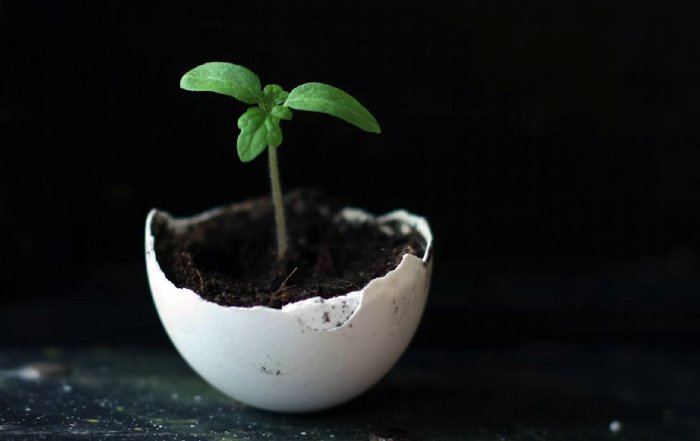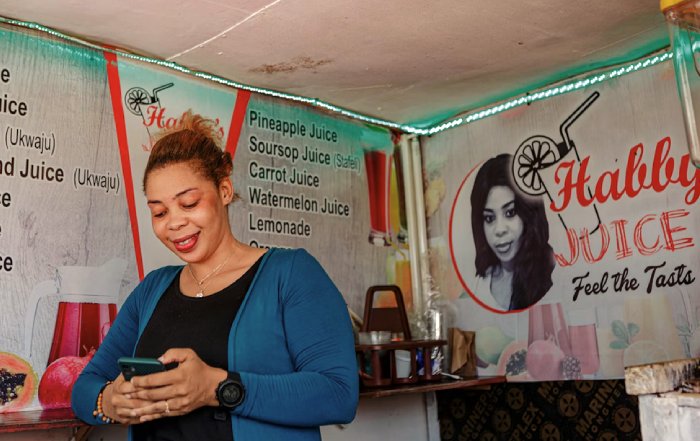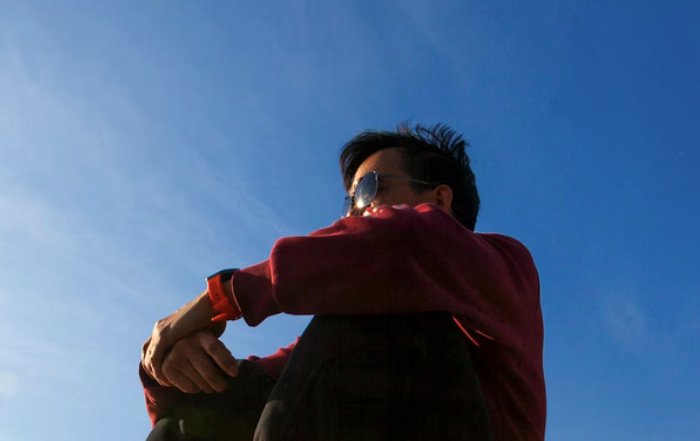Fashion as a Reflection of Culture and Identity in a Global 2025
Fashion, Identity and the Herstage Perspective
In 2025, fashion is no longer viewed merely as a superficial concern or a seasonal trend cycle; it has become a powerful language through which individuals and communities across the world articulate their culture, values and aspirations. On Herstage, where conversations about women's lives and stories, leadership, lifestyle and self-expression converge, fashion is understood as a living archive of identity, a dynamic interface between personal narrative and collective history that reveals how societies see themselves and how women, in particular, claim visibility, agency and power. As global audiences from the United States, the United Kingdom, Germany, Canada, Australia, France, Italy, Spain, the Netherlands, Switzerland, China, Sweden, Norway, Singapore, Denmark, South Korea, Japan, Thailand, Finland, South Africa, Brazil, Malaysia, New Zealand and beyond become more interconnected, the meaning of what people wear has grown more complex, blending tradition and innovation in ways that challenge old hierarchies and open new spaces for inclusion.
Fashion has always reflected culture, but the current era of digital media, accelerated globalization and heightened social awareness has intensified the relationship between clothing and identity. From the way a young professional in London chooses a tailored blazer to signal ambition and credibility, to how a designer in Lagos reinterprets Ankara prints to celebrate African heritage on international runways, fashion functions as a sophisticated code that communicates social belonging, political stance, religious belief and personal dreams. Platforms like Instagram, TikTok and WeChat have turned every street into a runway and every smartphone into a broadcasting tool, giving unprecedented visibility to styles that once remained local or marginalized. At the same time, institutions such as the Metropolitan Museum of Art's Costume Institute and the Victoria and Albert Museum continue to preserve and interpret historical garments, reminding audiences that fashion is also a critical historical document that records gender norms, economic structures and cultural exchanges across centuries.
Historical Threads: How Dress Has Always Spoken
To understand why fashion is such a potent reflection of culture and identity today, it is useful to look back at how clothing has functioned historically as a marker of social order and cultural meaning. In many societies, dress codes were explicitly regulated to reinforce class distinctions, gender roles and moral expectations. Sumptuary laws in medieval and Renaissance Europe, for instance, dictated which fabrics and colors different social classes could wear, effectively encoding hierarchy in visible form. Similarly, in many Asian, African and Middle Eastern cultures, garments such as the kimono, hanbok, sari, abaya or kente cloth developed as sophisticated systems of symbolism, with patterns, colors and draping styles conveying information about marital status, region, age, or religious identity. Museums and archives, including resources from organizations like UNESCO, provide extensive documentation that helps contemporary audiences explore intangible cultural heritage and understand how traditional dress has evolved alongside shifting political and economic realities.
The industrial revolution and the rise of mass production in the nineteenth and twentieth centuries transformed fashion into a global industry, but even as clothing became more standardized and widely available, it continued to serve as a visual language of identity. The emergence of haute couture in Paris, led by figures such as Charles Frederick Worth and later Coco Chanel, established fashion as an art form that could shape cultural ideals of femininity, modernity and luxury. At the same time, working-class uniforms, school dress codes and military attire reflected the growing importance of institutions and nation-states in defining how individuals should present themselves. Historical overviews from organizations such as the Fashion Institute of Technology and the Museum of Modern Art show that each era's silhouettes, from the corseted Victorian waist to the flapper dress and the power suit, mirrored deeper cultural debates about women's roles, sexuality, labor and freedom, debates that still resonate strongly with the leadership conversations taking place on Herstage.
Globalization, Hybrid Identities and the Digital Wardrobe
By 2025, globalization has reshaped fashion into a complex ecosystem where cultural symbols circulate rapidly, are reinterpreted and sometimes contested. A designer in Seoul may draw inspiration from Scandinavian minimalism, while a stylist in Berlin might mix West African prints with vintage American denim, creating hybrid looks that reflect the lived reality of multicultural cities and transnational lives. This fluidity has allowed many women to express layered identities, acknowledging multiple cultural roots and global influences rather than conforming to a single national or ethnic narrative. Reports from the World Economic Forum and the OECD on cultural industries highlight how fashion contributes not only to economic growth but also to soft power and cultural diplomacy, as countries like Italy, France, South Korea and Japan leverage their design heritage on the world stage.
Digital platforms have intensified this cross-pollination, enabling micro-communities to form around shared aesthetics, values or subcultures regardless of geography. Fashion bloggers, influencers and independent creators from diverse backgrounds now shape trends alongside traditional powerhouses like Vogue and Harper's Bazaar, often foregrounding voices and styles that were historically underrepresented. Through platforms such as Pinterest and YouTube, individuals can explore mindful approaches to personal style, learn about sustainable materials or discover designers from regions that mainstream media previously overlooked. This democratization of fashion media has empowered many women to craft more intentional wardrobes that reflect their ethics and aspirations, whether that means supporting local artisans, choosing modest silhouettes, or experimenting with gender-fluid designs that challenge binary norms.
Women, Power Dressing and the Politics of Visibility
For the global audience of Herstage, fashion's relationship to women's leadership and career advancement is particularly significant. Clothing has long been used to police women's bodies and limit their mobility, yet it has also served as a strategic tool for asserting authority and claiming space in male-dominated environments. The concept of "power dressing" emerged in the late twentieth century as women entered corporate and political arenas in greater numbers, adopting tailored suits, structured shoulders and neutral palettes to signal competence and seriousness within existing norms of professional appearance. Analyses from organizations such as Harvard Business Review and the Center for Creative Leadership have examined how attire influences perceptions of credibility and leadership potential, especially for women who must navigate intersecting biases related to gender, race and age.
In 2025, power dressing is evolving beyond a narrow template of masculine-inspired suits toward a more expansive understanding of professional identity. Women leaders in the United States, Europe, Africa, Asia and Latin America increasingly use fashion to express cultural pride, creativity and authenticity while maintaining the gravitas expected in boardrooms and public office. A CEO in Toronto might wear Indigenous-designed jewelry as a statement of reconciliation and respect, while a politician in Nairobi may choose locally woven fabrics to emphasize economic empowerment and national identity. Research from the McKinsey Global Institute and the World Bank on women's economic participation underscores how visible role models who embrace their cultural heritage in professional settings can inspire younger generations to see leadership as compatible with their own backgrounds and values. On Herstage, where career development and business insight intersect with lifestyle and self-expression, fashion is framed not as a superficial concern but as a strategic dimension of personal branding and influence.
Cultural Appropriation, Appreciation and Ethical Responsibility
As global fashion becomes more interconnected, questions of cultural appropriation versus appreciation have moved to the center of public debate. When designers or consumers from dominant cultures adopt elements of marginalized or colonized cultures without context, consent or fair compensation, fashion risks reproducing historical patterns of exploitation and erasure. Controversies around festival wear, runway collections and advertising campaigns have highlighted how sacred symbols, traditional garments or hairstyles can be trivialized when detached from their original meaning. Academic institutions and organizations such as The Fashion and Race Database and the Council of Fashion Designers of America have provided frameworks for understanding the power dynamics at play and for encouraging more respectful, collaborative approaches.
For a platform like Herstage, which speaks to a global audience of women invested in self-improvement and ethical living, the conversation about cultural appropriation is inseparable from broader commitments to diversity, equity and inclusion. Thoughtful fashion consumption involves asking who benefits from a particular trend, whether artisans are being fairly paid, and how historical injustices might shape present-day perceptions of certain styles. Resources from organizations like Amnesty International and Human Rights Watch help illuminate the labor conditions and human rights issues that often underlie the production of garments and accessories, reminding consumers that every purchase is a political act as well as a personal choice. At the same time, many designers and communities are demonstrating how cross-cultural exchange can be conducted with integrity, through partnerships that foreground mutual respect, co-creation and transparent storytelling about the origins and significance of particular motifs or techniques.
Sustainability, Health and the Ethics of the Wardrobe
The environmental and health impacts of fashion have become impossible to ignore, particularly as fast fashion has accelerated consumption patterns and waste on a global scale. Reports from the United Nations Environment Programme and the Ellen MacArthur Foundation detail how textile production contributes significantly to greenhouse gas emissions, water pollution and microplastic contamination, while also raising concerns about worker safety and chemical exposure. For women who care about health and wellbeing, these findings underscore that fashion choices are not only aesthetic or cultural but also environmental and bodily, influencing everything from skin sensitivity to long-term planetary resilience.
In response, a growing movement toward sustainable and circular fashion is reshaping how brands design, produce and market clothing. Companies are experimenting with organic fibers, recycled materials and regenerative agriculture, while consumers increasingly explore second-hand marketplaces, clothing rental and repair services. Organizations such as the Sustainable Apparel Coalition, Fashion for Good and Textile Exchange provide tools and standards that help businesses measure and reduce their ecological footprint, while educational platforms encourage individuals to learn more about sustainable business practices. On Herstage, coverage of lifestyle and fashion trends emphasizes mindful consumption, encouraging readers to build wardrobes that align with their values, support ethical brands and respect the health of both people and planet. By linking fashion to broader conversations about climate change, mental wellbeing and community resilience, the platform highlights how what people wear can either reinforce or challenge unsustainable systems.
Beauty, Glamour and the Psychology of Self-Presentation
Fashion is deeply intertwined with beauty standards and the pursuit of glamour, shaping how individuals feel about their bodies and how they believe they are perceived by others. Psychological research from organizations such as the American Psychological Association and the National Institutes of Health has shown that clothing can significantly influence mood, confidence and self-perception, a phenomenon sometimes referred to as "enclothed cognition." The choice of color, fit and fabric can affect posture, energy levels and even cognitive performance, which helps explain why many women select particular outfits for important presentations, negotiations or social occasions. On Herstage, discussions of beauty and glamour are framed within a broader understanding of mental health and self-worth, emphasizing that true elegance emerges when style choices support rather than undermine psychological wellbeing.
At the same time, global fashion and beauty industries have long propagated narrow ideals of attractiveness, often privileging Eurocentric features, thin bodies and youth. In recent years, however, there has been a growing push toward inclusivity, with brands featuring more diverse models in terms of size, age, ethnicity and ability. Organizations like the Dove Self-Esteem Project and the Body Positive Alliance advocate for media representations that reflect the real diversity of women's bodies and experiences, while many independent designers and influencers challenge retouching norms and celebrate authenticity. This shift has profound implications for how fashion reflects culture and identity, as it opens space for more women to see themselves as worthy of visibility and celebration. By curating stories that highlight varied expressions of beauty across regions-from the minimalist elegance of Scandinavian design to the vibrant opulence of South Asian bridal wear-Herstage invites readers to embrace a more expansive and compassionate vision of style.
Food, Ritual and the Wider Lifestyle of Dress
Fashion does not exist in isolation; it is part of a broader lifestyle ecosystem that includes food, rituals, celebrations and everyday habits. Cultural events such as weddings, religious festivals, graduation ceremonies and national holidays often bring together specific foods, garments and customs that collectively express shared identity and values. An Italian wedding might feature regional cuisine alongside heirloom lace veils, while a New Year celebration in Japan might pair traditional osechi-ryori dishes with carefully chosen kimonos that honor family lineage. Anthropological research from institutions like the Smithsonian and British Museum reveals how clothing and culinary traditions have historically evolved together, reinforcing community bonds and marking life transitions. For Herstage readers interested in food culture as well as fashion, these intersections offer rich insight into how identity is lived through the senses.
In contemporary urban centers from New York and London to Singapore and São Paulo, the blending of cuisines in restaurants and home kitchens mirrors the hybridization seen in street style and designer collections. Pop-up markets, fashion weeks and food festivals often share spaces, creating immersive environments where attendees can experience culture through taste, texture, color and sound simultaneously. This convergence underscores that fashion is not merely a visual spectacle but part of a multisensory narrative about who people are and what they value. By covering these intersections in its world and culture sections, Herstage positions fashion as a key lens for understanding globalization, migration and the evolving nature of community in the twenty-first century.
Education, Mindfulness and the Future of Fashion Identity
As fashion's cultural significance becomes more widely recognized, education and mindfulness emerge as crucial tools for navigating its complexities. Universities and design schools from Parsons School of Design to Central Saint Martins and Polimoda increasingly integrate courses on sustainability, ethics, cultural studies and technology into their curricula, preparing the next generation of designers and industry leaders to think critically about the social impact of their work. Online learning platforms and open-access resources allow broader audiences to explore fashion history and theory, empowering consumers to make more informed choices about what they wear and why. For Herstage, whose readers value education and lifelong learning, these developments align with a commitment to fostering informed, reflective engagement with style.
Mindfulness practices, from meditation to journaling, also influence how individuals approach their wardrobes, encouraging deeper awareness of emotional triggers, social pressures and unconscious biases that may shape purchasing decisions. Resources from organizations such as Mindful.org and the Greater Good Science Center highlight how intentional living can reduce impulsive consumption, enhance gratitude for existing possessions and cultivate a sense of sufficiency rather than perpetual lack. By integrating mindfulness into discussions of fashion, Herstage invites readers to see their closets not as sources of anxiety or competition but as evolving expressions of inner values and growth. This perspective aligns with broader movements toward minimalism, capsule wardrobes and slow fashion, which emphasize quality over quantity and narrative over novelty.
Herstage, Women and the Ongoing Story of Style
In the global landscape of 2025, fashion stands at the intersection of culture, identity, economics and ethics, serving as both a mirror and a canvas for the stories individuals and societies tell about themselves. For the women who gather on Herstage to explore lifestyle choices, pursue ambitious careers, refine their leadership presence and cultivate holistic wellbeing, clothing becomes a strategic and intimate tool for aligning outer image with inner purpose. Whether a reader is navigating corporate life in New York, launching a creative venture in Berlin, balancing family and work in Singapore, or advocating for social change in Johannesburg, her style choices carry cultural resonance and personal significance that deserve thoughtful consideration rather than dismissal as mere vanity.
By situating fashion within broader conversations about sustainability, cultural respect, mental health, economic justice and female empowerment, Herstage offers a uniquely comprehensive and trustworthy perspective for a discerning global audience. The platform's commitment to experience, expertise, authoritativeness and trustworthiness ensures that discussions of trends and aesthetics are grounded in rigorous analysis and ethical awareness, recognizing that every garment carries stories of labor, heritage, aspiration and identity. As the world continues to evolve, with technological innovations, shifting geopolitical dynamics and ongoing debates about gender and equality, fashion will remain a vital medium through which women negotiate their place in society and articulate their visions for the future.
Ultimately, fashion as a reflection of culture and identity is not a static picture but an ongoing dialogue, one that unfolds daily in wardrobes, workplaces, streets and digital spaces across continents. On Herstage, this dialogue is honored as both personal and political, intimate and global, weaving together the diverse experiences of women from the United States and the United Kingdom to Germany, Canada, Australia, France, Italy, Spain, the Netherlands, Switzerland, China, Sweden, Norway, Singapore, Denmark, South Korea, Japan, Thailand, Finland, South Africa, Brazil, Malaysia, New Zealand and beyond. In giving space to these voices and visions, Herstage affirms that what women wear is not simply about appearance; it is about identity, dignity and the right to be seen, on one's own terms, in a rapidly changing world.










